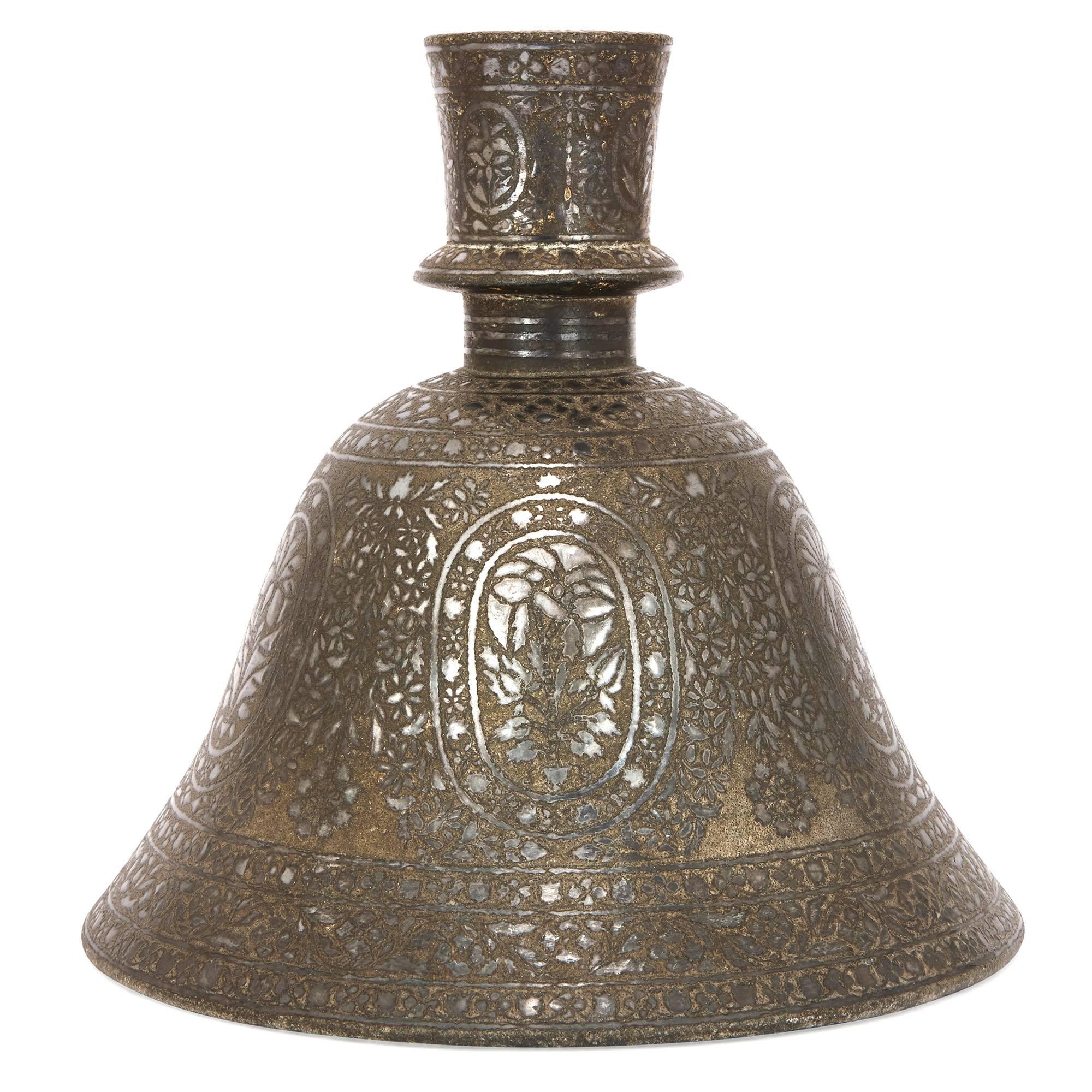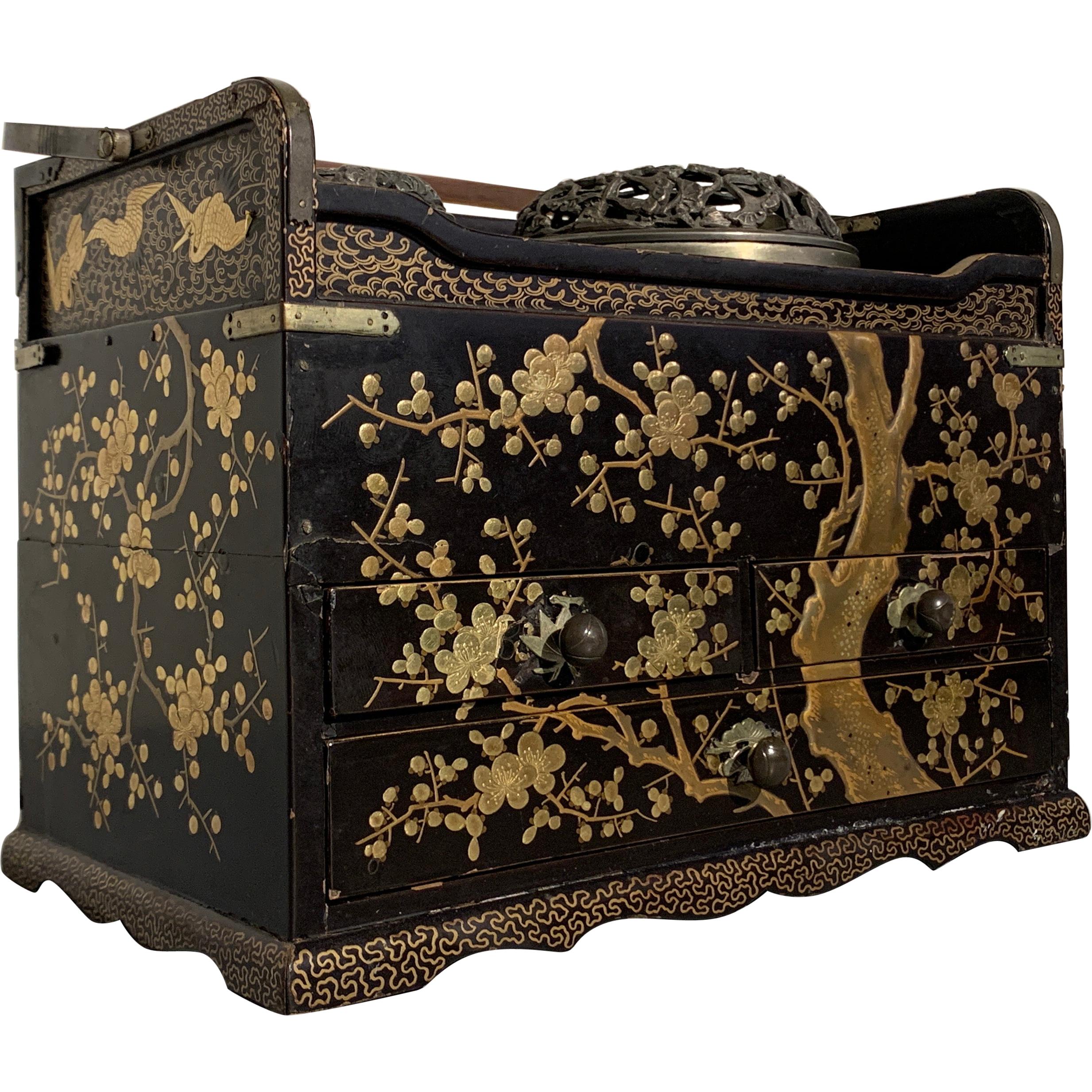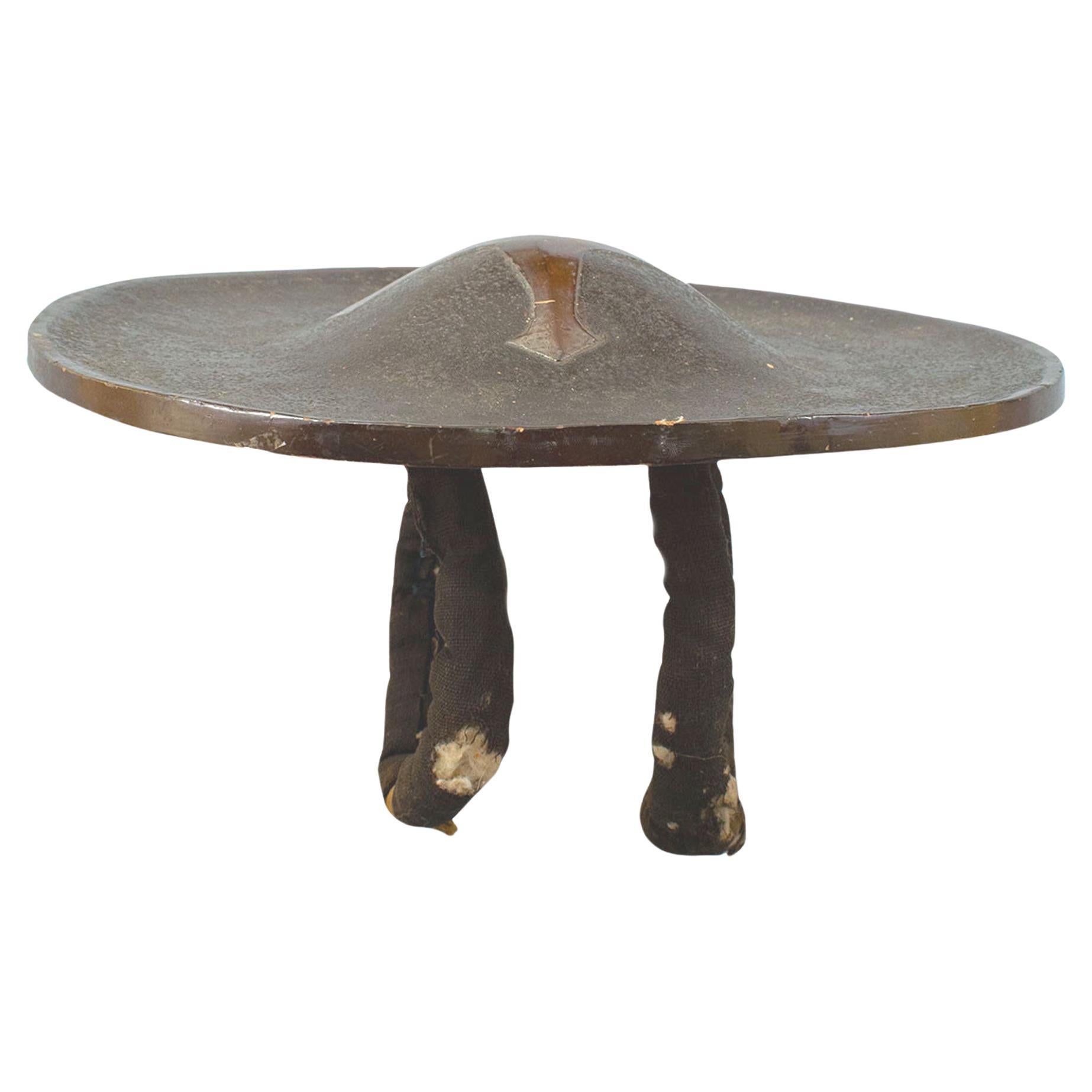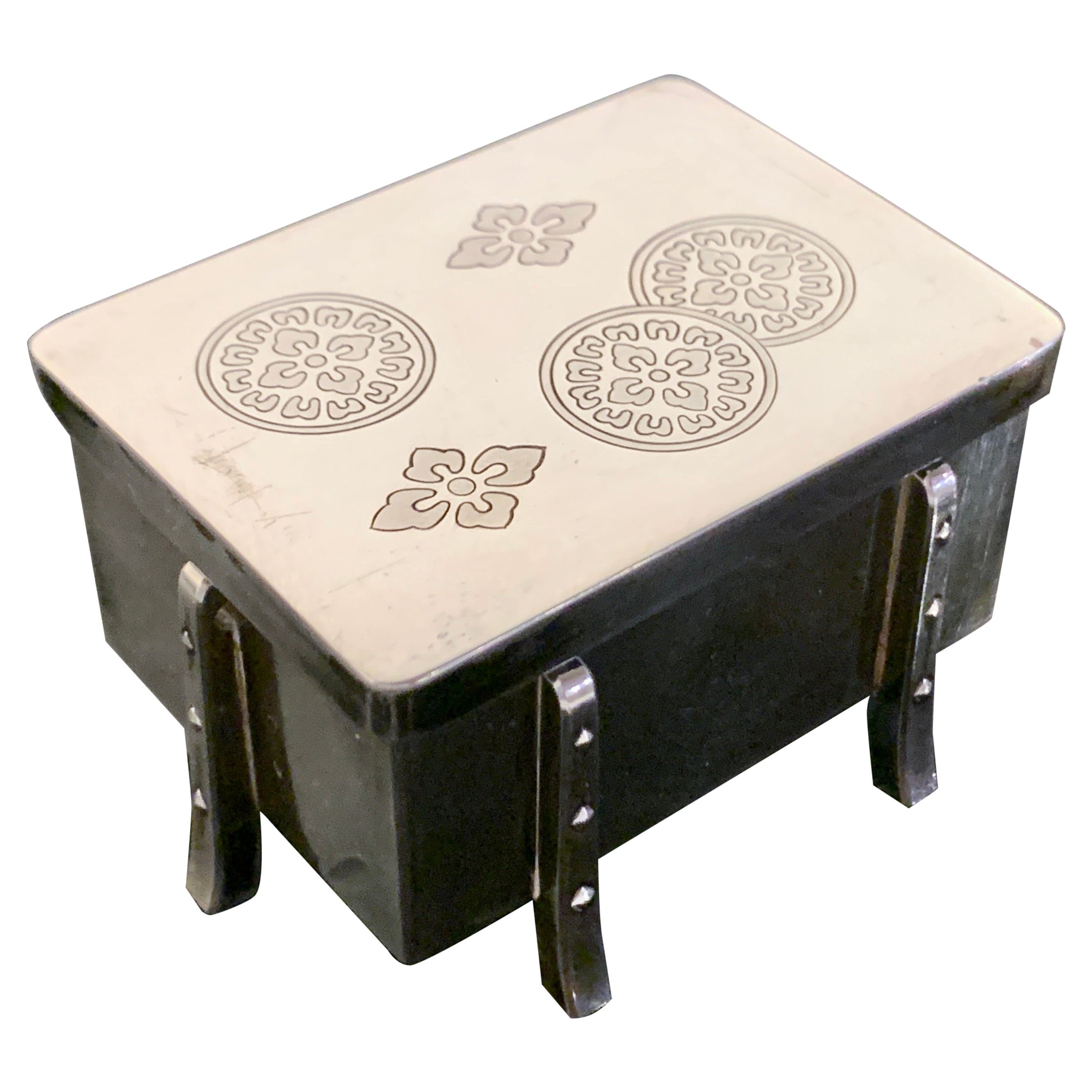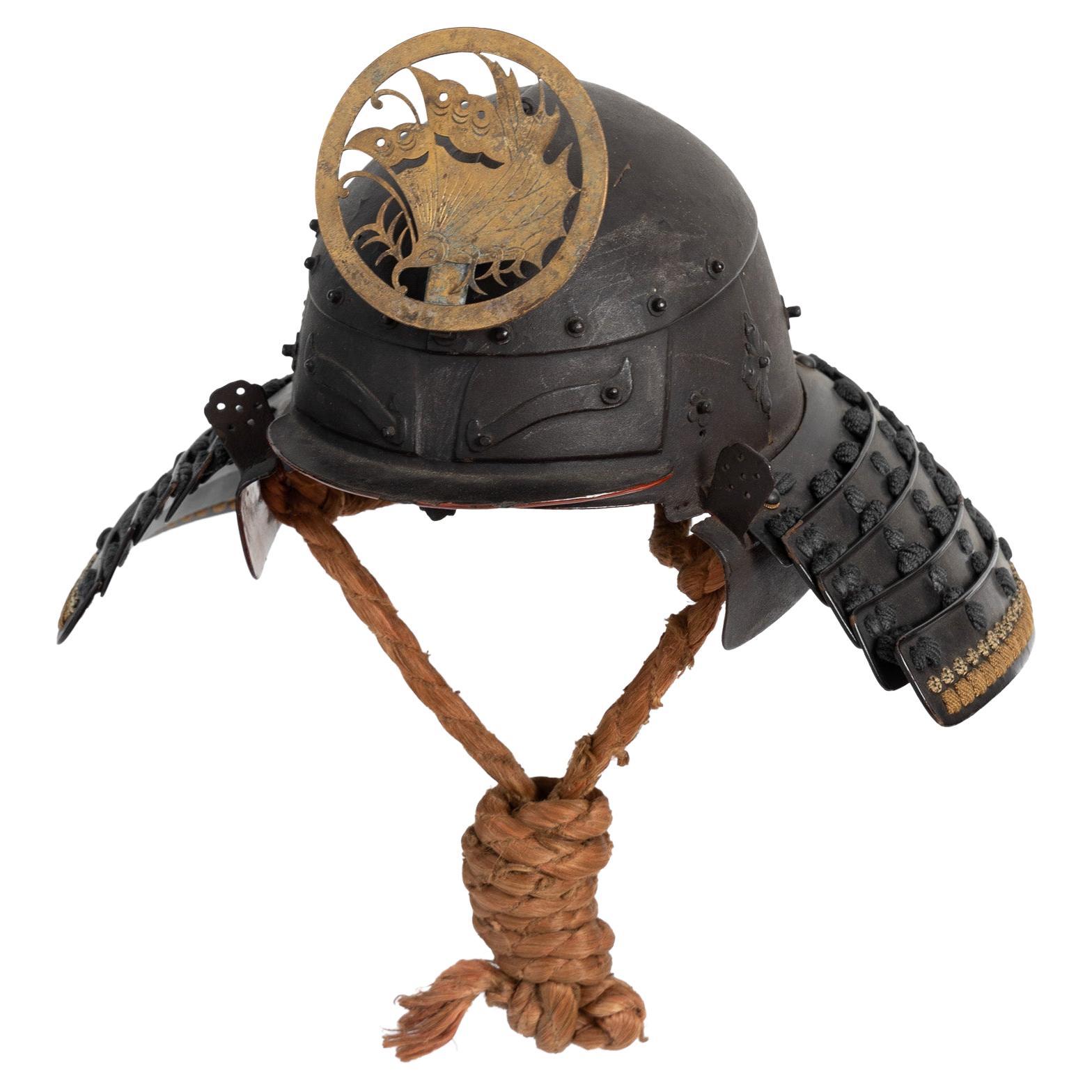Items Similar to A Very Good 19th Century Iron & Mixed Metal Tsuba, Japan Edo Period (1603-1868)
Want more images or videos?
Request additional images or videos from the seller
1 of 7
A Very Good 19th Century Iron & Mixed Metal Tsuba, Japan Edo Period (1603-1868)
About the Item
A finely decorated iron & mixed metal tsuba, showing a dark-brown iron ground decorated in low relief with organic inspired motifs in gold, silver & copper.
- Dimensions:Height: 0.13 in (3.31 mm)Diameter: 2.88 in (7.32 cm)
- Style:Edo (Of the Period)
- Materials and Techniques:
- Place of Origin:
- Period:
- Date of Manufacture:circa 1850
- Condition:Minor losses. In very good overall condition with one minor loss to the organic gold motif as observed in the primary image.
- Seller Location:Ottawa, CA
- Reference Number:1stDibs: LU2728327650342
About the Seller
5.0
Gold Seller
These expertly vetted sellers are highly rated and consistently exceed customer expectations.
Established in 1989
1stDibs seller since 2017
116 sales on 1stDibs
Typical response time: <1 hour
- ShippingRetrieving quote...Ships From: Ottawa, Canada
- Return PolicyA return for this item may be initiated within 2 days of delivery.
More From This SellerView All
- Very Fine & Large Japanese Bronze & Mixed Metal Vase, Meiji PeriodLocated in Ottawa, OntarioA large and very fine Meiji Period (1868-1912) patinated and mixed metal bronze vase of ovoid form, richly decorated with raised motifs of flying cranes accented with silver-overlay,...Category
Early 20th Century Japanese Meiji Metalwork
MaterialsSilver, Bronze
- A Very Good 19th Century Hand Painted Mexican Retablo Dated 1884Located in Ottawa, OntarioThe naïve, hand painted vignette depicts a woman praying to the images of Saint Anthony holding The Christ Child, together with The Holy Mother, all shown hovering above a group of t...Category
Antique Late 19th Century Mexican Folk Art Religious Items
MaterialsTin
- A Very Fine Japanese Mixed Metal Bronze Doban / Suiban, Meiji Period (1868-1912)Located in Ottawa, OntarioDoban are traditional Japanese bronze vessels used to display scholarly objects known as ‘Suiseki’ (water stones), whereas a Suiban is a traditional Japanese vessel made of wood or c...Category
Early 20th Century Japanese Meiji Scholar's Objects
MaterialsBronze
- 19th Century Oriental Bronze Bottle Bud Vase, Circa 1890Located in Ottawa, OntarioThe bottle shaped body decorated with foliate & geometric motifs within petal shaped panels, rising to a slender tapering neck to a flaring rim, raised overall upon a circular foot.Category
Antique Late 19th Century Asian Qing Metalwork
MaterialsBronze
- A Very Fine 19th Century Carved Lava Cameo, Continental Circa 1870Located in Ottawa, OntarioA finely executed lava cameo, sculpted in high relief with exacting proportions and detail, depicting a beautiful young woman rendered in profile against a field of trailing, fruitin...Category
Antique Late 19th Century European Victorian Collectible Jewelry
MaterialsLava
- A Very Good 19th Century Cut Glass & Sterling Silver Inkstand / CapstanBy Charles Boyton IILocated in Ottawa, OntarioThe robust globular shaped & cut glass body is fitted with a sterling silver collar & hinged lid, the interior retains its original removable glass reservoir. The inkwell sits withi...Category
Antique Late 19th Century English Victorian Inkwells
MaterialsSterling Silver
You May Also Like
- TOPPAI JINGASA EDO PERIOD - 18-19th Century - JapanLocated in TEYJAT, FRThis is a custom-made historical Japanese hat known as Jinggasa, worn by samurai during the Edo period (1603-1868), around the 18th to 19th century. Within the category of Jingasa, t...Category
Antique Late 18th Century Japanese Edo Arms, Armor and Weapons
MaterialsLeather, Textile, Paper
- 19th Century Indian Bidri Metal Hookah BaseLocated in London, GBThis fascinating piece dates from the 19th century in India, where it was used as a water base for a hookah, or shisha pipe. In traditional hookah smoking, the base of the pipe is no...Category
Antique 19th Century Indian Metalwork
MaterialsMetal
- Japanese Lacquer Smoking Box, Tabako Bon, Edo Period, 19th CenturyLocated in Austin, TXA very fine Japanese maki-e lacquer decorated tabako bon, or smoking box, late Edo Period, mid-19th century, Japan. The elegant smoking box of black lacquer decorated with a wonderful gold lacquer takamaki-e design of a gnarled and elegantly twisted plum tree with branches in full bloom. A border of golden cranes in flight to the top. The smoking box, called a tabako bon, is comprised of an open section at the top with inset with two cylindrical metal canisters...Category
Antique Mid-19th Century Japanese Edo Lacquer
MaterialsLacquer
- JINGASA - ICHIMON-GASA EDO Period 19th Century Samurai Helmet JapanLocated in TEYJAT, FRJINGASA - ICHIMON-GASA EDO Period 19th Century Jingasa, flat-shaped Samurai headdress made of wood, the exterior covered with black lacquer depicting a brown kamon, a Japanese heral...Category
Antique Mid-19th Century Japanese Edo Arms, Armor and Weapons
MaterialsLeather, Textile, Wood
- Japanese Silver Karabitsu Bonbonniere Box, Taisho Period, JapanLocated in Austin, TXA fine Japanese silver bonbonniere box in the shape of a karabitsu, Meiji Period, circa 1900, Japan. The small bonbonniere crafted of silver in the form of a karabitsu, a storage ...Category
Vintage 1920s Japanese Meiji Metalwork
MaterialsSilver, Sterling Silver
- Okitenugui Kabuto Samurai Helmet Shaped as a Head Towel Saika, Early Edo PeriodLocated in Milano, ITOkitenugui kabuto Samurai helmet shaped as a head towel Saika, early Edo period, 17th century The Haruta armorers who moved to Kii province in the early 17th century, took the name from the village where they worked, Saika, near Wakayama, possibly on request of the local daimyo, Asano Yukinaga, a great armour amateur. Specialised in the construction of plate helmets, they produced mainly two typologies of kabuto: one with six plates covered with a chrysanthemum-shaped plate on top and one shaped as a “head towel”, called okitenugui. The latter type of kabuto employs very heavy plates crafted in a curved manner and was improved in order to make it resistant to firearms. This okitenugui kabuto features some distinctive decorations of the Haruta school, including the application of cut-out iron elements, including eyebrows, washers and lozenge-shaped decorations on the sides. The ring on the top, however, is a rare feature and could be used to hold a small war flag.Category
Antique 17th Century Metalwork
MaterialsIron
Recently Viewed
View AllMore Ways To Browse
Japanese Edo
Japanese Edo Period
Japan Iron
Japanese Iron
Mixed Metals Antique
Japanese Edo Gold
Antique Japanese Iron
Edo Period Gold
Dark Antique Copper
Japanese Mixed Metal Gold
Japanese Tsuba
Tsuba Japan
Antique Tsuba
Antique Japanese Tsuba Tsuba
Japanese Antique Tsuba
Japanese Tsuba Antique
Antique Chinese Cloisonne China
Antique Chinese Cloisonne Cloisonne

